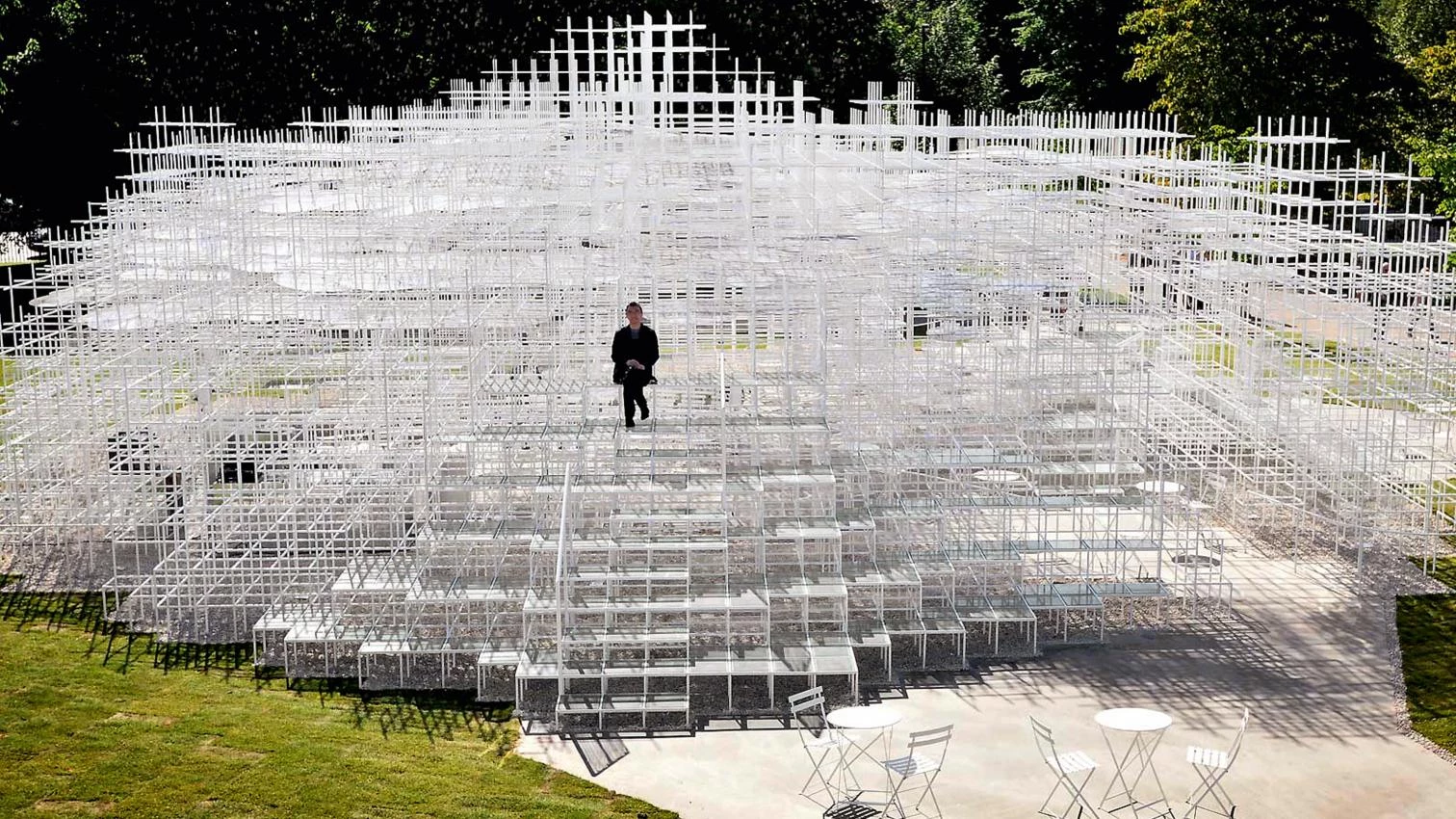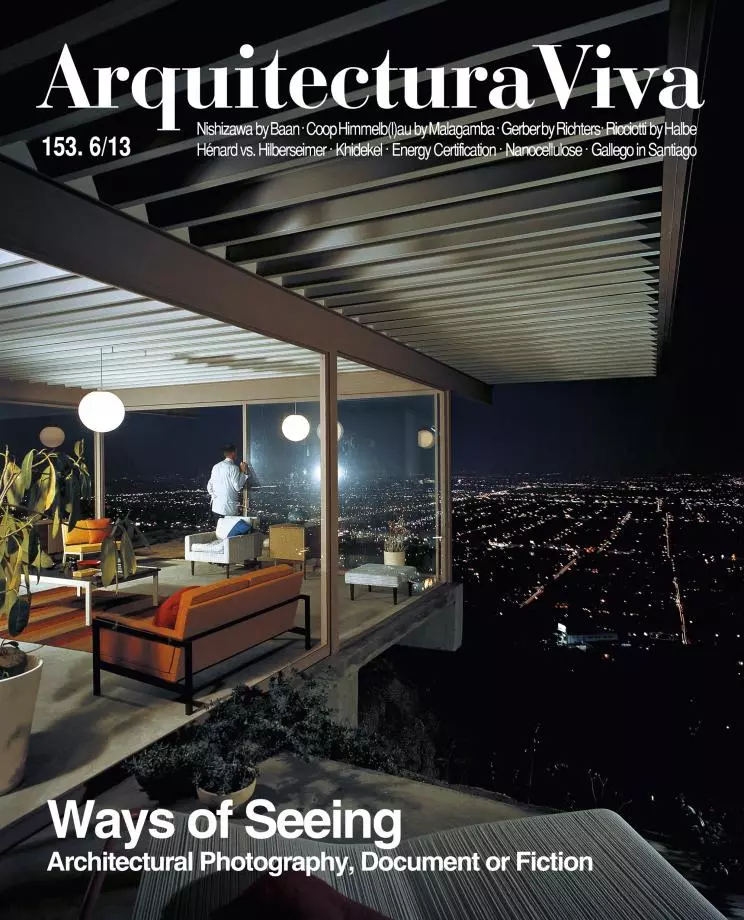
Since the first of them in 2000, the summer pavilions that the Serpentine Gallery raises beside its building in London’s Kensington Gardens have been an exceptional year-by-year showcase of the marriage of art and architecture. Designed by the Japanese architect Sou Fujimoto, the thirteenth such temporary structure – which opened to the public last 8 June – has a light build and a near-evanescent image that strikes quite a contrast with the telluric and self-withdrawn character of its two immediate predecessors on the site, both by Swiss practices, Herzog & de Meuron (2012) and Peter Zumthor (2011); the former was a space that threw light on the foundations of previous pavilions, and the latter presented a hermetic construction organized around a hortus conclusus of sorts, in such a way that it came to be called an ‘anti-pavilion’ (see Arquitectura Viva 141).
Inspired by the ungraspable form of clouds in the sky, Sou Fujimoto’s building can be described as an anisotropic forest of slender profiles – painted white and with sections like tubes – forming a rigorous Meccano that gives rise to areas varying in density, in accordance with the specifications of the program. Placed in the openings that are created by this scheme are circles of transparent polycarbonate which serve as shelters when it rains, and whose surfaces reflect sunlight poetically. This year’s Serpentine Pavilion – the third to be commissioned to a Japanese firm, after Toyo Ito’s (2002) and SANAA’s (2009) – can be visited until 20 October 2013.





